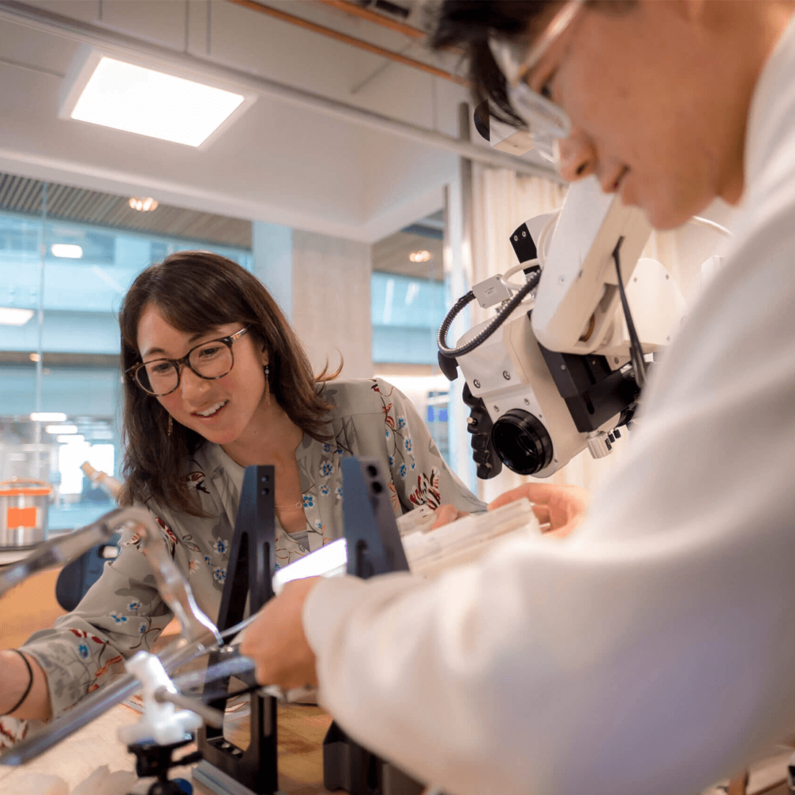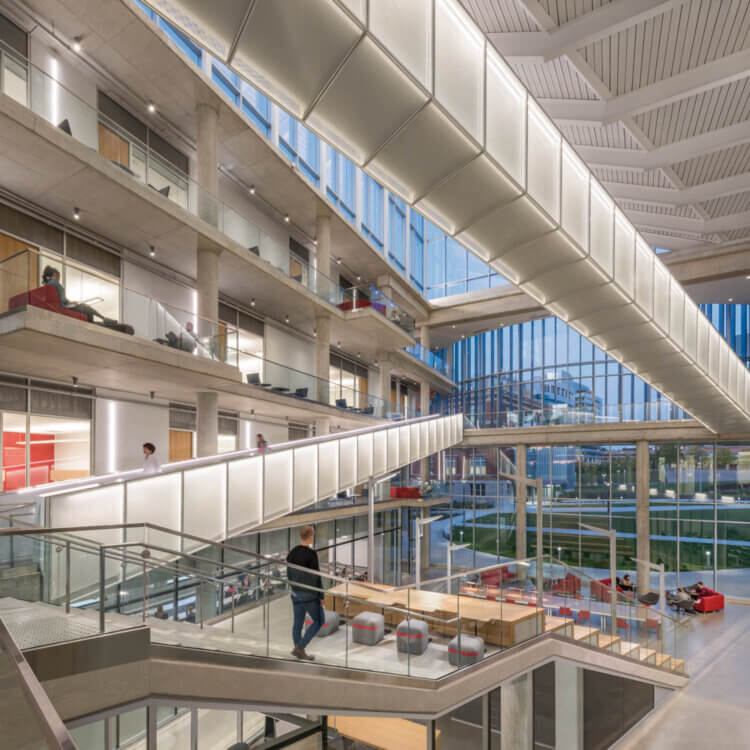The new Franklin Antonio Hall at the University of California San Diego is a platform for discovery and knowledge-sharing. It’s designed to support an interconnected network of researchers, says Albert P. Pisano, dean of UC San Diego’s Jacobs School of Engineering. “The research that happens here harnesses all the technologies across the engineering school, united by digital technologies, and focuses on assisting people in their search for health and happiness,” he says.
Undergraduates, graduate students, professors, and staff work in collaboration with industry professionals from Qualcomm, Teradata, and others in 14 affinity spaces called “collaboratories.” Researchers are designing smaller and more powerful electric car batteries, improving digital security, modeling efficient supply chains, and more.
And although each lab houses cutting-edge technology, none of the researchers work in a vacuum. “We’re tying them together so that these groups don’t become silos,” Pisano says. “They become sources of interaction instead.”



